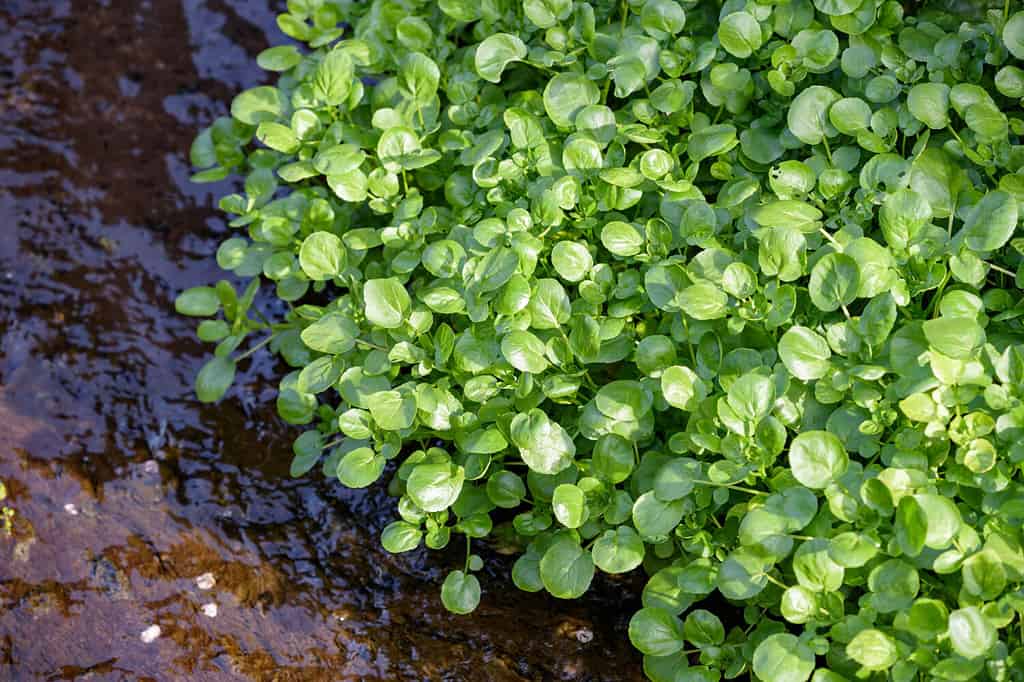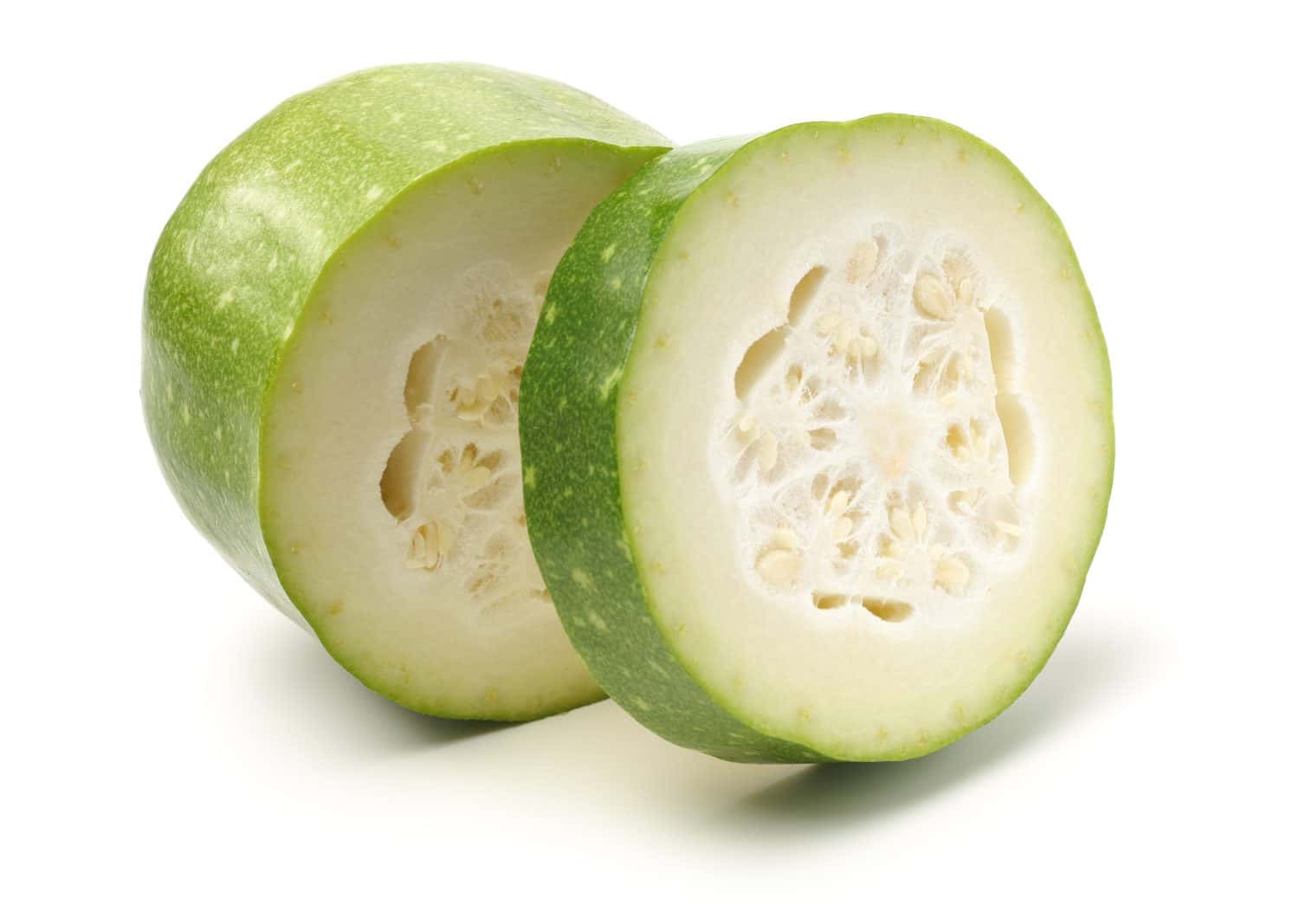In our increasingly global world, we are used to finding whatever vegetables we want when we want. So, we often forget that not every plant (or vegetable) is indigenous to our area. Many of our favorite meal accompaniments come from other countries. Such is the case with vegetables that are native to Bangladesh. Some of these are common and everyday foods for us. Others may sound familiar, but perhaps we haven’t cooked with them. Below, we’ll explore 7 vegetables native to Bangladesh. Perhaps you will inspired to make a new dish!
1. Bitter Melon

Bitter melon belongs to the same family as cucumbers.
©Emily Li/Shutterstock.com
A particularly fascinating vegetable is the bitter melon (Momordica charantia). It belongs to the Cucurbitaceae family and has many common names. You may have heard it called bitter gourd, bitter squash, or balsam pear. While bitter melon is native to Bangladesh, it has gained popularity globally. Many South American and Caribbean dishes feature this unusual vegetable these days.
Bitter melon’s skin is typically light green and has a series of bumps and ridges covering it. The internal flesh is white. Its flavor takes time to acclimate to. However, if you can find dishes you enjoy that also feature bitter melon, it is worth your time.
The health benefits of this veggie are staggering. Bitter melon is packed with anti-inflammatory polyphenols, flavonoids, saponins, terpenoids, and antioxidants. It is high in fiber and low in carbohydrates. Plus, this veggie boasts a range of vitamins and minerals. It contains vitamins C and A, iron, zinc, magnesium, phosphorus, potassium, calcium, and several B vitamins.
If your local grocery store doesn’t carry bitter melon, don’t worry. Most metropolitan areas have Indian or Asian grocery stores, which will likely carry it in season. Add bitter melon to curry, stir-fry, or salads. Stuff it with a meat and sauce mixture. Or put it in brine to make a unique pickle.
2. Cucumber

Cucumber is a ubiquitous presence in the modern culinary world, and it is native to Bangladesh.
©PixaHub/Shutterstock.com
You will almost always find cucumbers (Cucumis sativus) in salads at home or when eating out. It is a ubiquitous presence in the modern culinary world. And it is native to Bangladesh. It is also part of the Cucurbitaceae family and has a similar appearance to bitter melon. However, most cucumber varieties will have smoother and darker skin. The inner flesh is almost always white. While cucumbers are technically a fruit, most people view (and treat) them as vegetables. So, we’ll add them to the category here.
Cucumbers have a high water content, so they are a tasty way to refresh your palate at the end of a long day. Additionally, they have a surprisingly high nutritional content. They have vitamins A, C, and K, magnesium, fiber, manganese, and potassium.
There are plenty of flavorful ways to enjoy cucumbers, though most are familiar. You can pickle them, add them to salad, include them in water, and toss them with a tasty vinaigrette.
3. Eggplant (Brinjal)

Eggplant belongs to the nightshade family, so some people may have an allergy to them.
©iStock.com/zhekos
Did you know that this staple of Italian cuisine is actually native to Bangladesh? Eggplant (Solanum melongena) is also called brinjal or baigan and belongs to the Solanaceae family. There are many eggplant varieties, but the one thing that makes them all stand out is their shape. This vegetable is most notably shaped almost like a teardrop. Many of us are most familiar with purple eggplants. But you can find them striped, green, white, and orange. The inside of every variety is either white or slightly yellowish-green.
This tasty vegetable is low-fat and high in fiber. It boasts a rich nutrient content. Each serving contains a hearty dose of vitamins K, C, and A, folate, phosphorus, iron, potassium, calcium, and magnesium.
One familiar way to eat this fascinating vegetable is to make eggplant parmesan with it. Other culinary eggplant adventures may include babganoush, in soup, roasted, or in curry.
One note of caution is that since eggplant is part of the nightshade family, not everyone can tolerate it. If you have an allergy or sensitivity to other members of this family, you may want to avoid eating it.
4. Hyacinth Bean

Hyacinth beans play a role in many traditional medicine systems.
©pisitpong2017/Shutterstock.com
One bean variety that may be slightly unfamiliar is the hyacinth bean (Lablab purpureus). It belongs to the Fabaceae family and is cultivated in many parts of the world these days. While it is technically a pole bean, many people eat the roots, leaves, flowers, and seeds. In fact, hyacinth beans play a role in many traditional medicine systems. However, use caution before consuming. Large amounts of raw hyacinth beans (and the other plant parts) may be unsafe.
As long as the pods are prepared properly, though, you should have no issues. You can add them to curries or treat them as you would any other pole bean. Consider processing them like mung beans or tofu for a tasty treat. And feel free to add the leaves and flowers to salads in small amounts.
5. Leaf Amaranth

Amaranth comes in several colors and produces delicious edible leaves.
©Anna Gratys/Shutterstock.com
You may have heard of the grain amaranth (Amaranthus). But you may not know that before it becomes an edible grain, the amaranth plant produces delicious leaves. You can harvest the leaves young and treat them as you would spinach. Most grocery stores don’t carry this unusual but flavorful green. However, you will likely have luck finding some during the summer farmer’s market.
Like the grain, amaranth leaves are absolutely packed with nutrients. They have fiber, potassium, iron, protein, vitamins C, K, B, and A, lysine, and calcium. Leaf amaranth is low in calories and naturally gluten-free.
You can cook leaf amaranth the same way you would spinach. Add it to soups, stir-fries, sautees, stews, or lentils. Consider including them in your daily smoothie or salads for an extra treat.
6. Watercress

Watercress has a slightly spicy taste.
©Picmin/Shutterstock.com
Add this flavorful leafy green to endless dishes! Watercress (Nasturtium officinale) belongs to the Brassicaceae family. It has smaller leaves than some of its cousins and a slightly spicy taste.
Watercress has loads of nutritional benefits. It is low in calories but packed with goodness. When you add some to your meals, you’ll get a healthy dose of vitamins K, A, and C, manganese, calcium, thiamine, magnesium, riboflavin, phosphorus, folate, and more.
The ways to enjoy this spicy green are nearly endless. You can add it to any raw salad, stir-fries, soups, or sandwiches. Consider turning it into a sauce, dip, or spread.
7. Wax Gourd

Wax gourd, or winter melon, is a popular addition to soups, stews, and stir-fries.
©JIANG HONGYAN/Shutterstock.com
You may have heard wax gourd (Benincasa hispida) is called winter gourd, ash gourd, or winter melon. This vegetable is native to Bangladesh and belongs to the Cucurbitaceae family. Like cucumbers, wax gourd is technically a fruit but gets treated like a melon for culinary purposes. It stores for an exceptionally long time. So, you can stock up while it’s in season and enjoy your bounty for months to come.
Wax gourds are packed with nutrition. They have fiber, riboflavin, flavonoids, carotenes, zinc, thiamin, iron, vitamin C, and antioxidants. Like its cousin, the cucumber, it has a very high water content. This makes the unusual item very refreshing.
Do not eat wax gourds straight off the vine. They need to get properly cared for and cooked first. This step is one of the reasons many people treat them like vegetables. You will want to remove the skin and the seeds before cooking. Add it to stews, soups, curry, stir-fry, or sweet baked goods. It even makes a fantastic addition to smoothies after being lightly cooked.
Summary of 7 Vegetables Native to Bangladesh
| Number | Vegetable | Scientific Name |
|---|---|---|
| 1 | Bitter Gourd | Momordica charantia |
| 2 | Cucumber | Cucumis sativus |
| 3 | Eggplant | Solanum melongena |
| 4 | Hyacinth Bean | Lablab purpureus |
| 5 | Leaf Amaranth | Amaranthus |
| 6 | Watercress | Nasturtium officinale |
| 7 | Wax Gourd | Benincasa hispida |
The photo featured at the top of this post is © Anna Gratys/Shutterstock.com
Thank you for reading! Have some feedback for us? Contact the AZ Animals editorial team.







